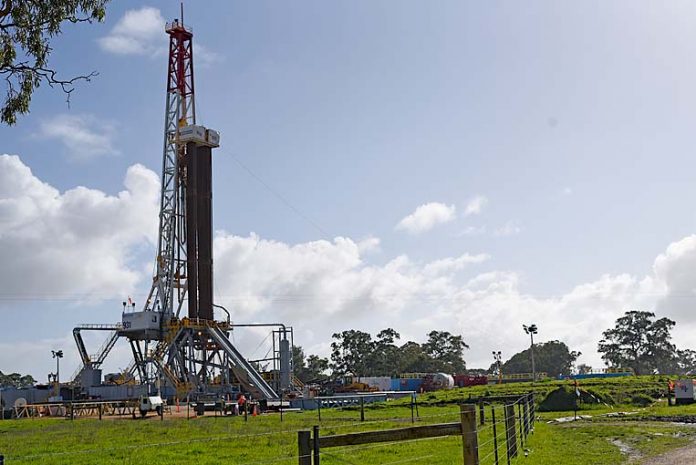
BEACH Energy’s Haselgrove-4 rig is currently a hive of action just south of Penola as it enters a crucial stage of drilling, nearing its 4000 metre target depth.
This week marks a key phase in the gas giant’s search for conventional gas stores in sandstone formations deep below the Limestone Coast surface, with the third and final section of the well being drilled.
The rig – located between Nangwarry and Penola – has currently drilled to around a 2561 metre depth, with the final 1300 metre considered the “main hole” which will be used to assess the viability of the Pretty Hill and Sawpit sandstone formations for conventional gas supply.
The well – which will not be fracture stimulated – will be used to appraise the size of the Haselgrove Field and follows the success of a discovery well drilled in 2017.
If the well is deemed a commercial success, work will then be undertaken to connect it to the redeveloped Katnook Gas Plant, which could be commissioned as early as December.
Beach Energy South East regional manager Jon Conti said the “drill string” had already passed through the region’s two aquifers – the Gambier limestone and Dilwyn sandstone – with the segment spanning a few hundred metres.
Mr Conti reassured residents there had been no impact on the South East’s water supply, adding more than 100 wells have been drilled in the region before Haselgrove-4.
“We also have water bores placed around the well lease with samples taken before, during and up to three months after drilling to ensure the aquifer is untouched,” he said.
“These samples are all analysed in a lab and we have not reported any changes from any of the drill sites.”
Beach Energy will also extract 27 one-metre long core samples from the Haselgrove-4 well for further analysis, including age dating the reservoir and refining chemical composition of the minerals and elements in the sandstone.
This information will also be used to compare the site to other known reservoirs across the Otway Basin, painting a clearer picture of the deep earth make-up.
“It is like a linking tool to help understand where the formation is in other wells and how that sandstone changes over distance,” Mr Conti said.
Once drilling is complete, well clean up and completion will take around three weeks, with the rig demobilised over a fortnight and before final testing is undertaken at the site.
Once completed, the drill rig will move to the nearby Dombey-1 site located west of Penola, before heading into Victoria.
During this time, the rehabilitation of the Katnook Gas Plant will continue as scheduled.
Closed in 2013, the gas plant demolition work was recently completed with construction of the new facility due to start in July.
Mr Conti said the plant could be commissioned as early as December this year.
“We are currently a little bit ahead of schedule for the plant rehabilitation,” he said.
“Obviously moving into winter things may slow down due to rain, but we expect the first gas to go to the market in late January or early February.”








